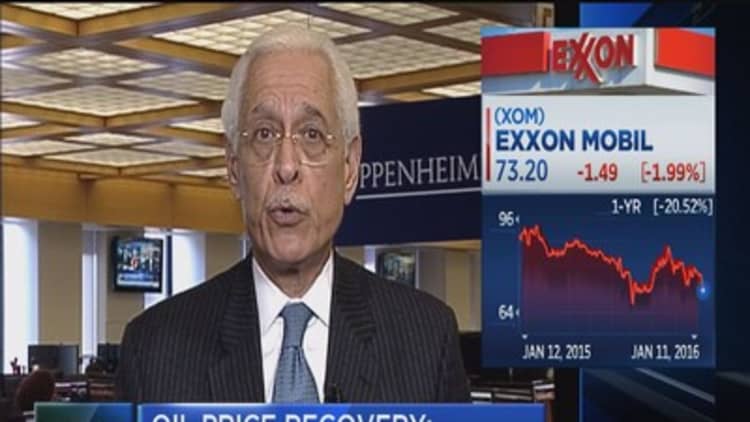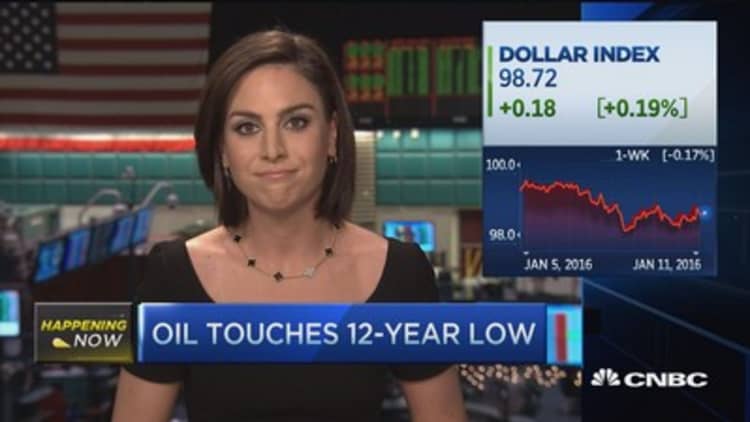


Half of U.S. shale oil producers could go bankrupt before the crude market reaches equilibrium, Fadel Gheit, said Monday.
The senior oil and gas analyst at Oppenheimer & Co. said the "new normal oil price" could be 50 to 100 percent above current levels. He ultimately sees crude prices stabilizing near $60, but it could be more than two years before that happens.
By then it will be too late for many marginal U.S. drillers, who must drill into and break up shale rock to release oil and gas through a process called hydraulic fracturing. Fracking is significantly more expensive than extracting oil from conventional wells.
"Half of the current producers have no legitimate right to be in a business where the price forecast even in a recovery is going to be between, say, $50, $60. They need $70 oil to survive," he told CNBC's "Power Lunch."
At current oil prices, companies both large and small — including ExxonMobil and Chevron — will have to think twice about their dividend, Gheit added. Oil majors have so far resisted pressure to cut dividends.
U.S. crude fell to a fresh 12-year low below $31 on Monday, while declined to the lowest level since April 2004. On Monday, Morgan Stanley joined Goldman Sachs in saying oil could fall as low as $20 a barrel.
Such a drop would be brief because supply and demand are beginning to come into balance, John LaForge, co-head of real assets at Wells Fargo, told "Power Lunch" on Monday. Once oil bottoms, it takes an average of two months for energy stocks to bottom, he said.
But a number of producers would enter bankruptcy even with crude near $30 per barrel, he added, noting that roughly 25 percent of exploration and production companies went bankrupt after the oil bust of 1986.
The S&P 500 energy sector ended 2015 down 24 percent. Fourth-quarter earnings for the category are expected to decline nearly 70 percent year over year, according to S&P Capital IQ.
U.S. drillers are now spending more than they are making from operations, a situation that Gheit said is unsustainable and will eventually force prices higher.
"The oil industry needs a minimum amount of investment to keep oil supply in line with demand," he said. "Even if the demand in China is not as strong as we thought ... the current investment right now would not be sufficient enough to bring additional production to meet global demand."
Oil prices have fallen about 70 percent from their highs in the summer of 2014. The rout accelerated after OPEC, led by top oil exporter Saudi Arabia, declined to enforce production cuts among members of the cartel, a strategy that has supported crude prices in the past.
Gheit said he believes the Saudis will not allow prices to recover until they "take care" of U.S. shale producers, who have contributed to global oversupply as American production has more than doubled since 2008.
The Saudis are also looking to settle the score with Russia and Iran, both of whom are on opposite sides of regional conflicts and are dependent on oil revenues, Gheit said.




